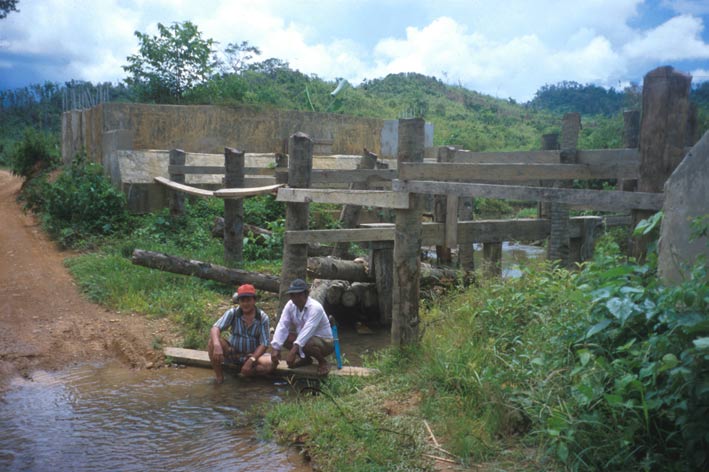 |
Midway in Palawan. One had to cross small
streams with or without bridges. My cotravellers Herson Morco (left) and Angel Espinosa
resting for a while.
coll. & cult. B793 |
|
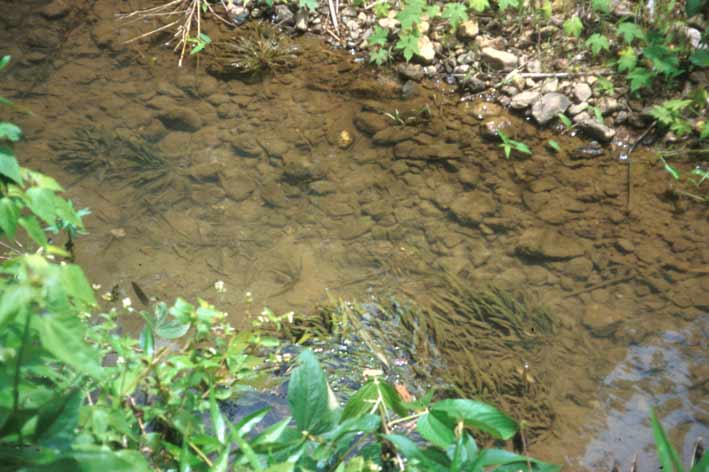 |
A few meters downstream from the 'bridge' we
found a few small patches of C. pygmaea. We didn't found anymore plants in this
stream, but probably every stream will have these plants.
coll. & cult. B793
|
|
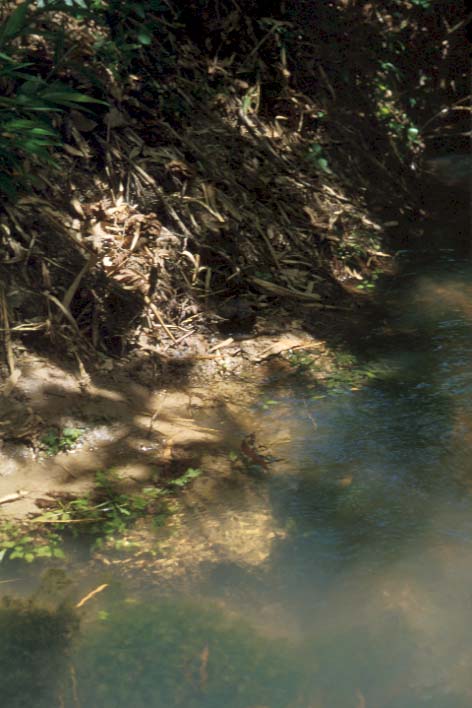 |
C. pygmaea growing on the banks of the
Labangan river on Basuanga, the main island of the the Calamian group between Mindoro and
Palawan. In the middle of the stream grow big specimens up to 25 cm.
coll. & cult. B787 |
|
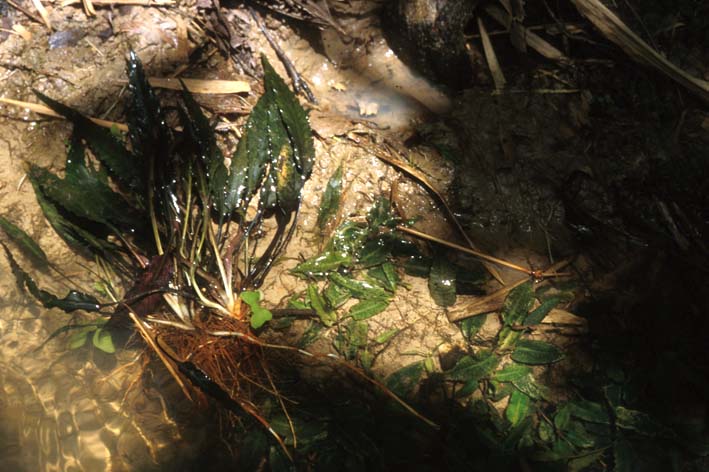 |
The same spot. The big plants, reaching up to 25
cm, were collected in the streambed at c. 60 cm depth. There may be some tidal influence.
At a few kms you could go for coral diving.
coll. & cult. B787
|
|
| |
|
|
|
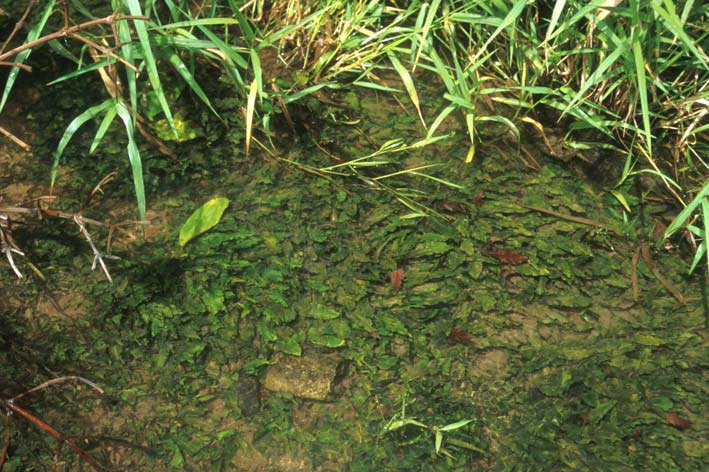 |
Another stream in Palawan with a big 'carpet' of C. pygmaea. Its a special feeling to walk over with your bare feet.
coll. B791
|
|
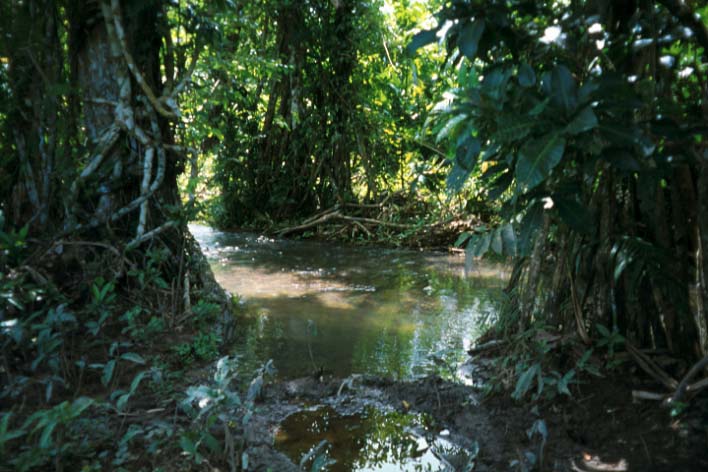 |
A small stream near Lake Manguao (Palawan). C.
pygmaea grows in about 10 cm water.
coll. B788
|
|
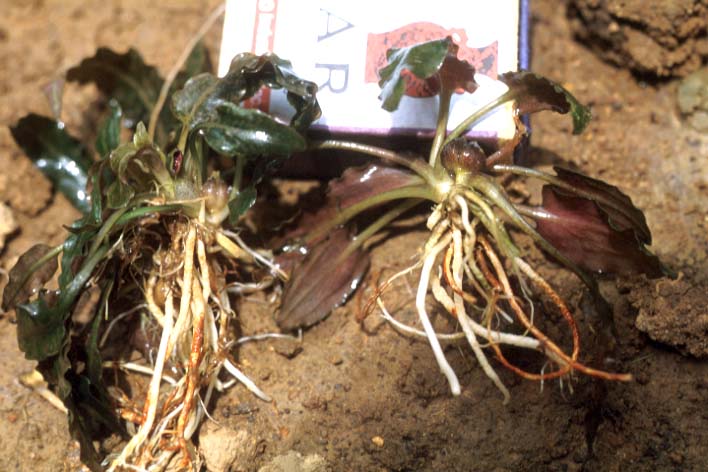 |
A digged out specimen. Note the fruit and the
(damaged) spathe. Interesting is to see the strong, transverse ringed, contractible
roots.
coll. B789
|
|
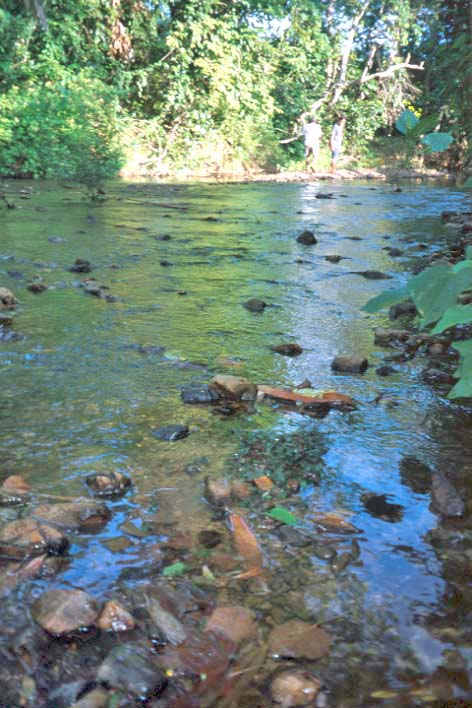 |
Small patches of C. pygmaea growing
near Sandakan (Palawan). The bottom of the river is stony, the level may rise for more
than 1 meter.
coll. B795
|
|
| |
|
|
|
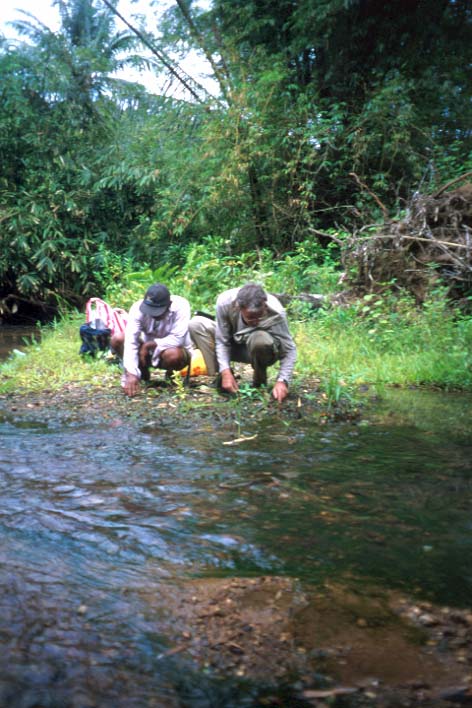 |
A stream NW of Taytay (Palawan) close to the
sea. Angel Espinosa (left) and the author collecting spathe's and fruits of C. pygmaea.
coll. B794
photo Morco
|
|
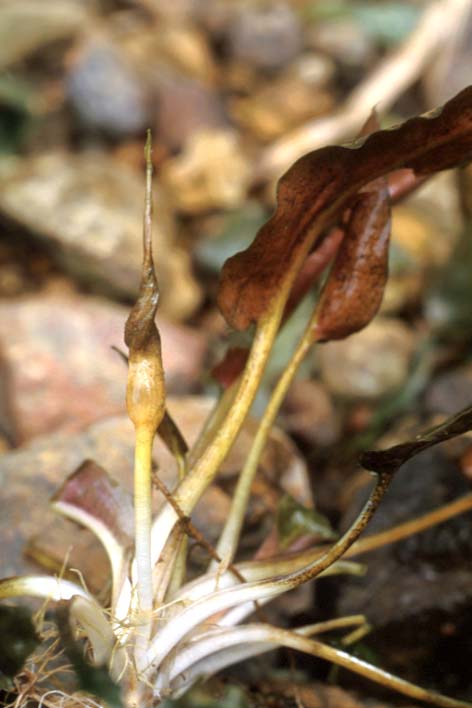 |
An unopened spathe of C. pygmaea. Note
the upright position of the limb. The plants grow rather deep buried into the soil (white
parts).
coll. B794
|
|
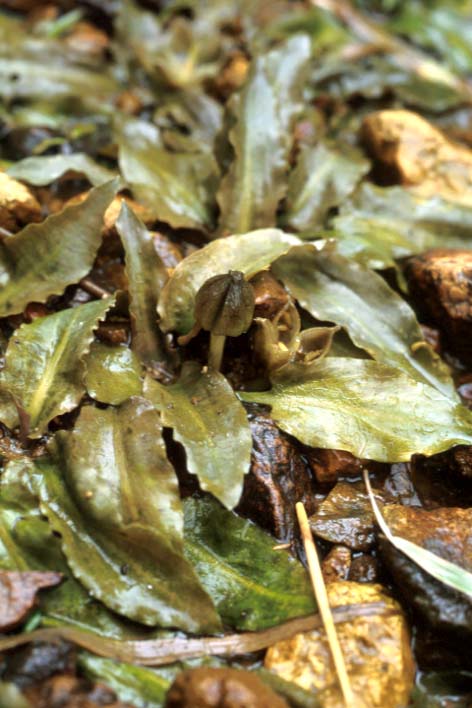 |
A close view on the bank (picture at left).
Hundreds of fruiting plants growing at the moment emersed. Note the stony habitat.
coll. B794
|
|
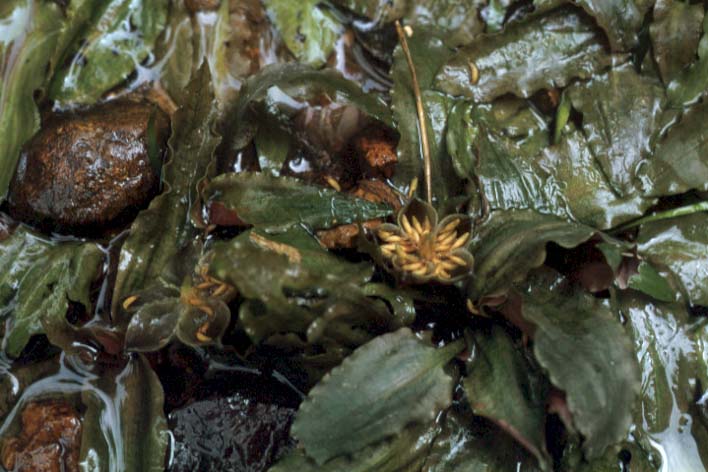 |
An opened fruit of C. pygmaea. The
seeds are visible and ready for distribution. They will germinate immediately.
coll. B794
|
|
| |
|
|
|
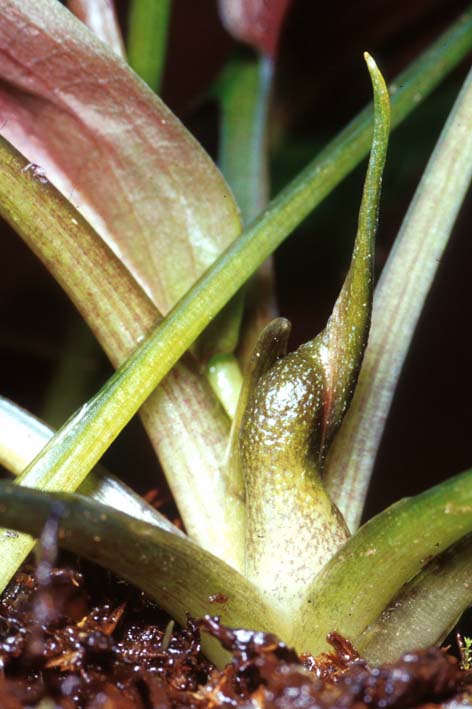 |
An unopened spathe of a cultivated specimen of C.
pygmaea. This one has again the oblique position of the limb.
coll. B794, cult. W
photo van Wijngaarden
|
|
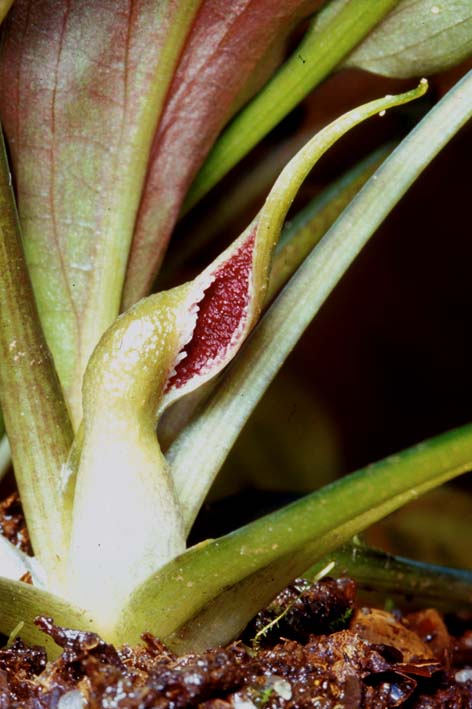 |
This cultivated specimen also shows the oblique
position of the limb. However the limb opens up to the end.
Note the reddish hue on the lower surface of the leave.
coll. B794, cult. W
photo van Wijngaarden
|
|
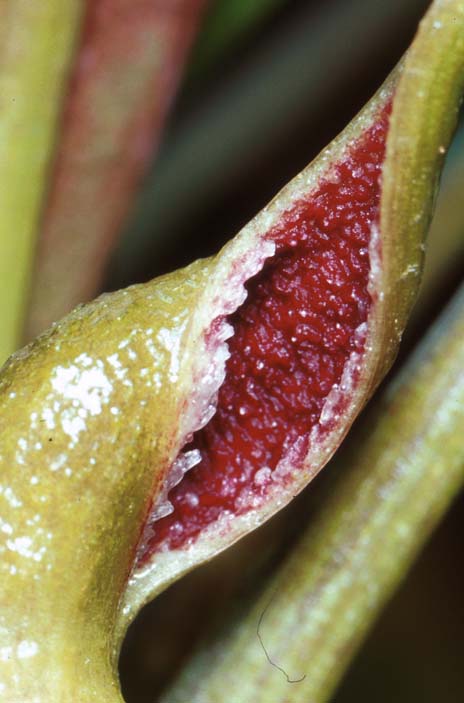 |
Detail of the picture at left. Note the rough
inner surface of the limb. A collar is not present in C. pygmaea. The overall
length of the spathe is 3 - 4 cm.
coll. B794, cult. W
photo van Wijngaarden
|
|
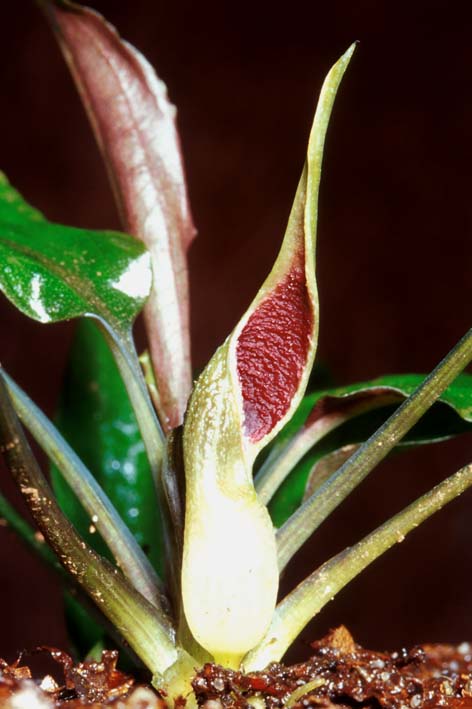 |
Cultivated specimen of C. pygmaea. The
limb of the spathe opens wide. The oblique position of the limb is apparently not typical.
coll. B788, cult. W
photo van Wijngaarden
|
|
| |
|
|
|
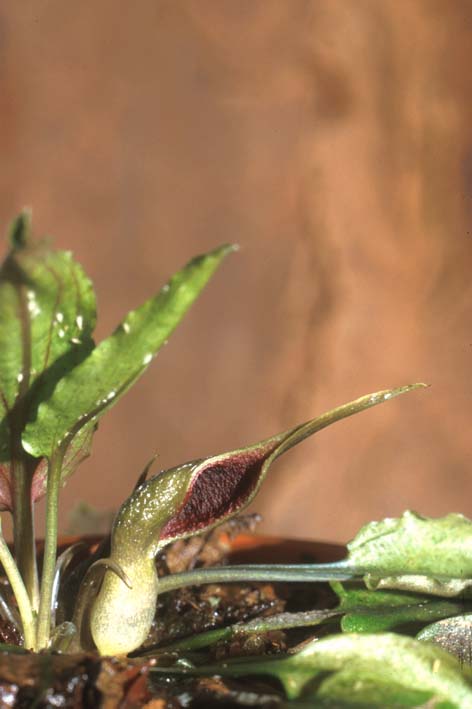 |
A normal developed spathe of C. pygmaea.
coll. & cult. B789
|
|
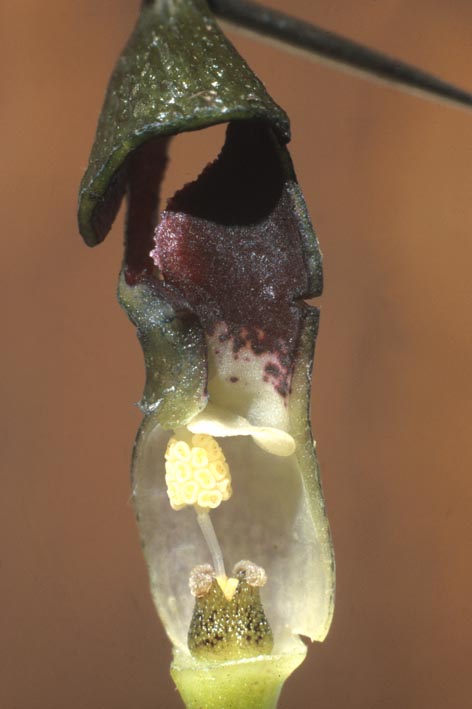 |
Length section of the spathe showing the inner
side of the limb and the flowers.
coll. & cult. B789
|
|
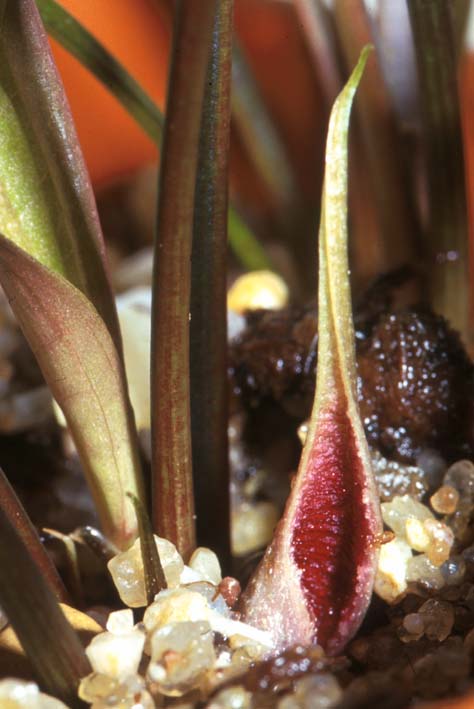 |
A cultivated specimen of C. pygmaea,
flowering with only the limb of the spathe above the ground.
coll. B793, cult. W
photo van Wijngaarden
|
|
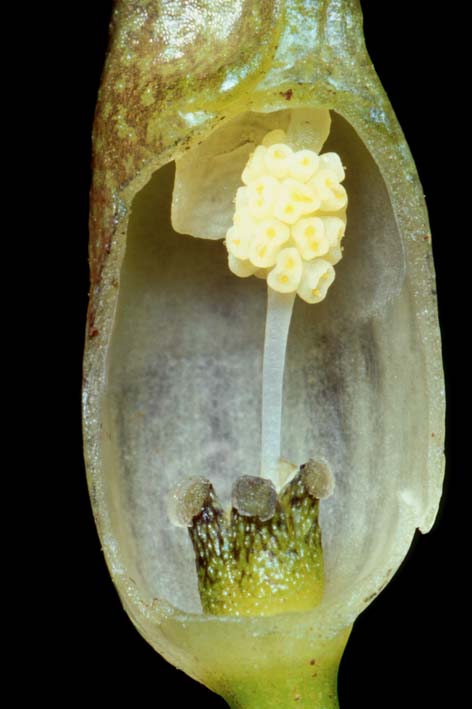 |
Opened lower part of the spathe, the kettle. The
female flowers (lower part) seem to be poorly developed.
coll. B788, cult. W
photo van Wijngaarden
|
|
| |
|
|
|
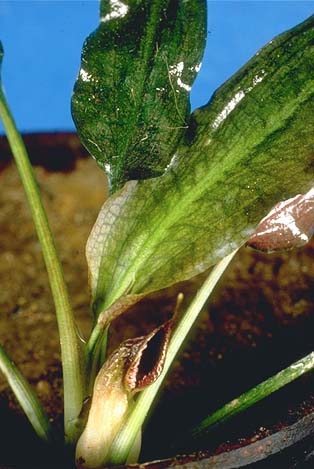 |
The first known photograph of (a cultivated) C.
pygmaea (Jacobsen 1982). Note the small sideward opening and the small tail of the
spathe.
coll. hort., cult. NJ 2962
photo Jacobsen
|
|
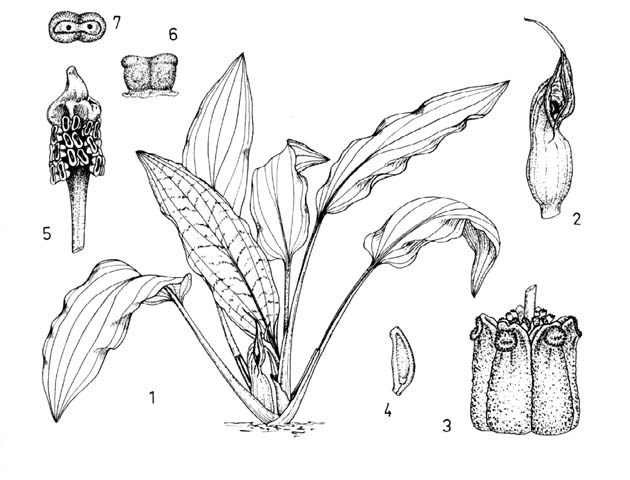 |
Drawing of Jacobsen's plant (see left) of C.
pygmaea in de Wit (1990).
drawing Ike Zewald
|
|
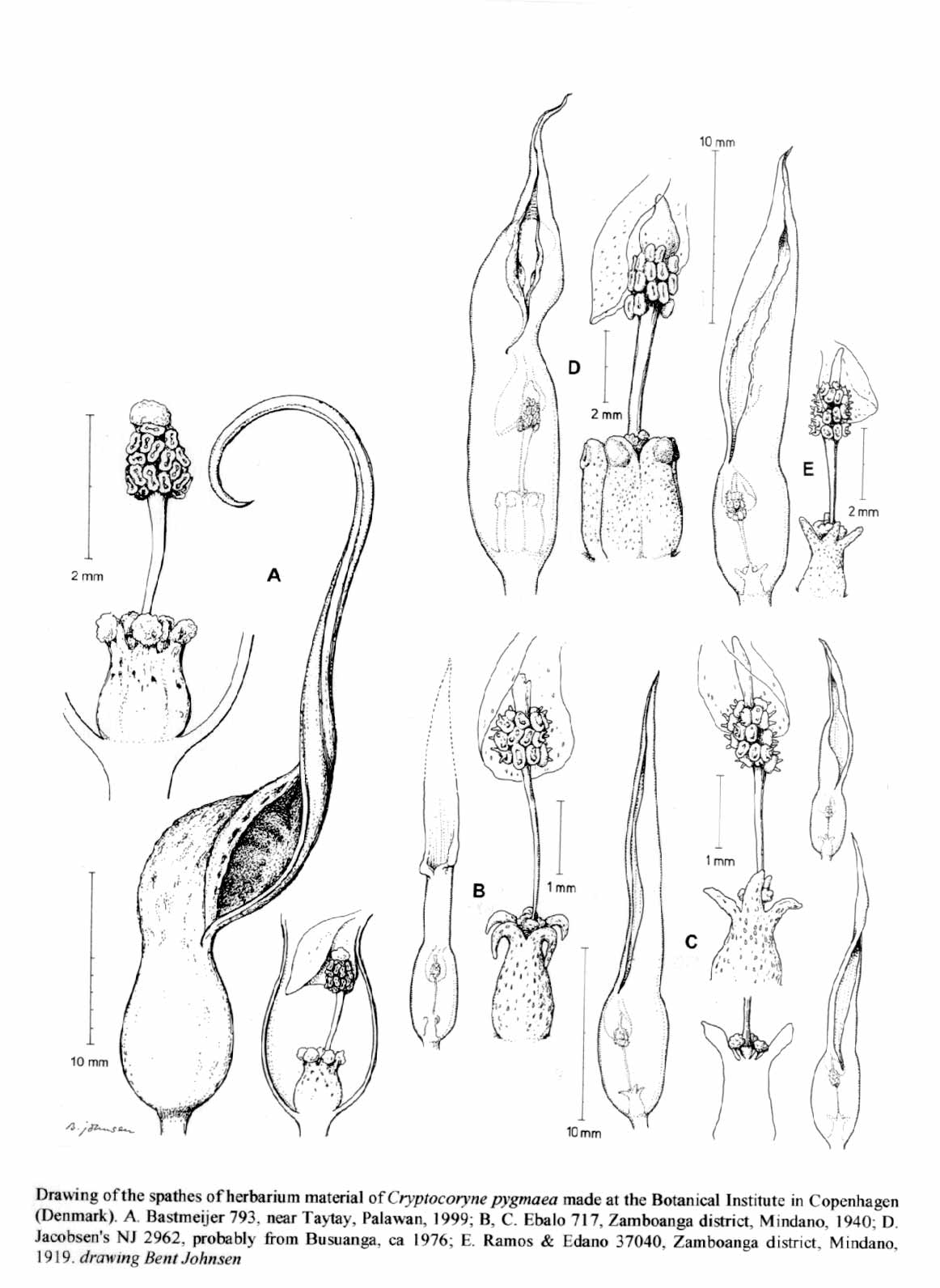 |
All known collections of C. pygmaea.
Read the text under the full picture for explanation (Bastmeijer & Morco 2000).
drawing Bent Johnsen
|
|
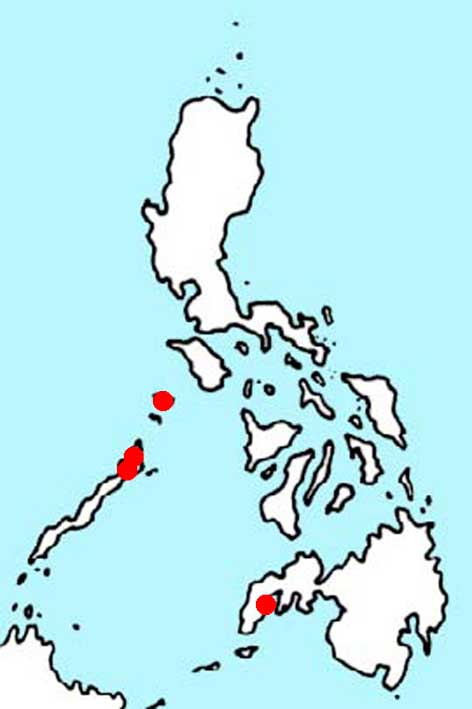 |
Distribution of C. pygmaea in the
Philippines.
|
|
| |
|
|
|
Cryptocoryne pygmaea was only known from herbariumsheets till ca 1970 when
Niels Jacobsen discovered an unknown plant in a shipment of C. aponogetifolia's
from the Philippines to Copenhagen. He could identify this plant as C. pygmaea,
using the old herbarium material from Kew (the Manila sheets were destroyed in WW2). Until
then most authors regarded this plant as a synonym for C.
auriculata (from Sarawak).
The unknown origin of this plant is cleared up during my trip with Herson Morco (Morco
International Aquatics, Manila, Philippines), may 1999. We could find the former locality
at Busuanga island (Calamian group, halfway from Mindoro to Palawan) from where local
suppliers send plants to Manila where there were shipped together with C. aponogetifolia.
Localities of C. pygmaea are known from West Mindanao and Palawan.
In 1984 a botanical expedition to Palawan, sponsored by the Hilleshög
forestry (timber) company, revealed a confirmation of the 1905 collection of Merrill. C.
pygmaea was found near Lake Manguao (= Lake Danao). But no live material was brought
back. During our 1999 trip we found a lot of new localities for C. pygmaea in the
Northern part of Palawan. They do not grow only on the banks (small specimen, ca 5 - 8 cm
height) but also in deeper water, where they can grow up to 25 cm.
The first results in cultivation show some variation in the spathe and the leaves. It also
proves that C. pygmaea is good aquarium plant.
Updated January 2002 |
Literature.
- Arends, J.C., J.D. Bastmeijer & N. Jacobsen, 1982.Chromosome numbers and taxonomy in Cryptocoryne (Araceae).II. Nord.J.Bot. 2 : 453-463.
- Bastmeijer, J.D. & H. Morco, 2000. Cryptocoryne pygmaea Merrill (Araceae) von Busuanga und Palawan (Philippinen). Aqua Planta 25(3): 99-107.
- Hilleshog Forestry AB, 1985. The Palawan Botanical Expedition Final Report.
- Jacobsen, N., 1982. Cryptocorynen. Alfred Kernen Verlag, Stuttgart.
- Merrill, E.D., 1919. New or noteworthy Philippine plants XV. Philipp.J.Sci. 14(4) :
370-371.
- Merrill, E.D., 1921. A Bibliographic Enumeration of Bornean Plants. Journal of the Straits
Branch of the Royal Asiatic Society : 106-109.
- Merrill, E.D., 1925. Cryptocoryne. An Enumeration of Philippine Flowering Plants 1 : 189.
- Sadilek, V., 1972. Neue Cryptocorynen VIII : Cryptocoryne auriculata Engler. DATZ 25 :
56-59.
- Schulze, J., 1978. An den natürlichen Standorten von Cryptocoryne aponogetifolia Merrill
in de Philippine. DATZ 31/9 : 310-314.
- Wit, H.C.D.de, 1959. Het genus Cryptocoryne 8. Het Aquarium 30(2) : 36-40.
- Wit, H.C.D.de, 1990. Aquarienpflanzen, 2. Auflage. Ulmer, Stuttgart. ISBN 3-8001-7185-6
|
|